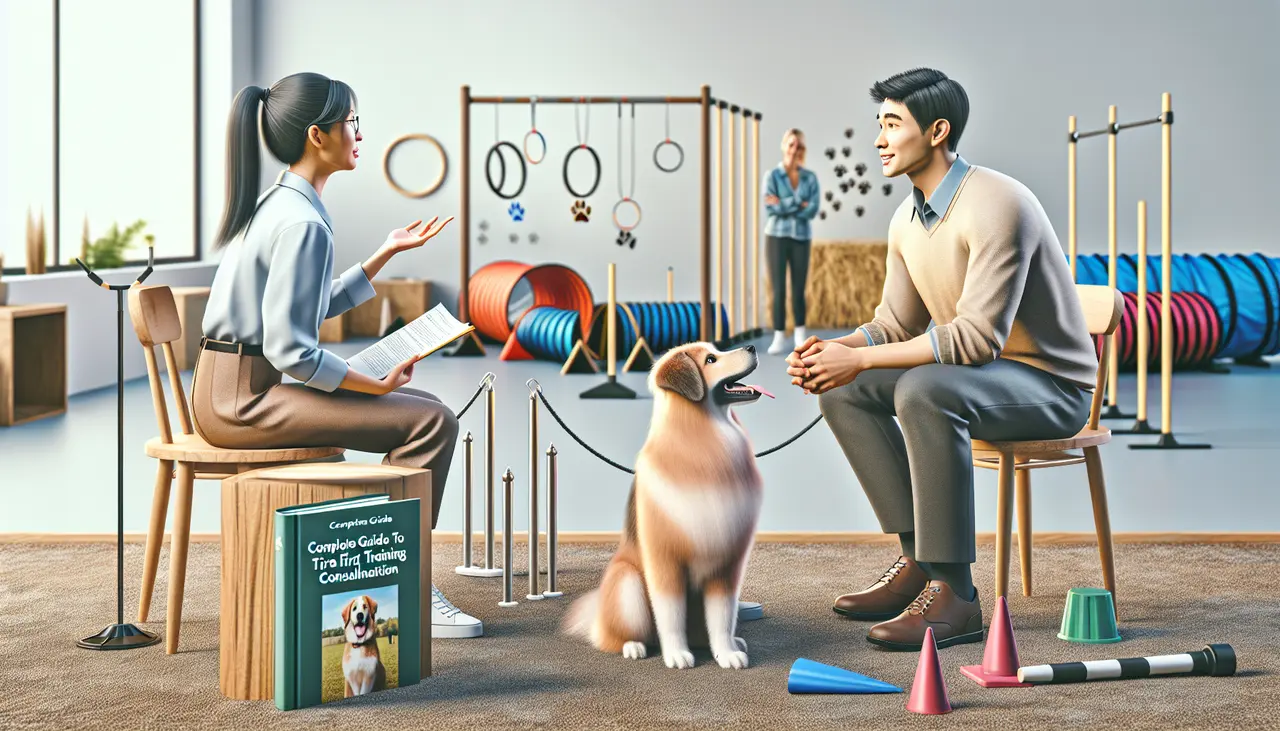Introduction to Dog Training Consultation
When you book your first dog training consultation, think of it as the first step to a new chapter with your furry friend. This meeting is crucial. It’s where the trainer gets to know you and your dog, understands your needs, and sets the stage for what’s to come. The trainer will ask questions about your dog’s history, behavior, and any specific issues you’re facing. You’ll also discuss your goals and what you hope to achieve through training. Remember, every dog is unique, so this consultation helps the trainer tailor their approach to suit your dog’s individual needs. It’s not just about teaching your dog new tricks; it’s about creating a stronger bond between you and your pet. And remember, there are no silly questions here. If you’re curious or concerned about anything, now’s the time to ask. This is your journey too, after all.
Preparing for Your First Consultation
Before you head to your first dog training consultation, take a moment to prepare both yourself and your pooch. This will help make the most out of the session. First off, jot down any specific behaviors or issues you want to address. Whether it’s jumping on guests or barking at squirrels, having a clear list makes sure you don’t forget anything important. Next, gather any relevant paperwork. This might include your dog’s vaccination records or any previous training history. Also, consider your dog’s daily routine and diet as these can influence behavior. Make sure your dog has had a chance to exercise a bit before the consultation. A walk or some playtime can help burn off extra energy, allowing your dog to focus better during the session. Lastly, bring along your dog’s favorite treats and toys. These can be used as tools to encourage cooperation and keep the training positive. Keep an open mind and be ready to learn. Remember, this is a team effort to ensure your furry friend can be their best self.
What Questions to Expect From the Trainer
Getting ready for your first dog training session means you’ll be asked a bunch of questions by the trainer. It’s their job to understand you and your dog better. Expect questions like what behaviors you’re hoping to change, your dog’s daily routines, any past training experiences, and how your pup behaves around other animals and people. They’ll also be curious about your dog’s age, breed, and health history. Think of it as them trying to get the full picture, so they can make the best plan for you and your furry friend. Remember, every bit of info helps, so be ready to share.
Evaluating Your Dog’s Behavior: The Trainer’s Perspective
When a trainer first meets your dog, they’re looking to understand your dog’s unique personality and behavioral tendencies. They start by observing how your dog behaves around new people and environments. Are they shy and hesitant, or do they jump in with tails wagging? This initial meeting helps the trainer gauge your dog’s confidence levels, social skills, and potential areas that need work. The trainer will also pay close attention to how your dog responds to basic commands, which sheds light on their current training level. It’s not just about identifying ‘problems’ but understanding your dog as an individual. This knowledge allows them to tailor training techniques to suit your dog’s specific needs, making the training process more effective and enjoyable for both you and your furry friend.
Setting Goals for Your Dog’s Training
When you walk into your first dog training consultation, setting clear goals is crucial. Think about what you want your furry friend to learn. Do you want to focus on basic obedience like sit, stay, and come? Or are there specific behaviors you’re looking to address, such as jumping on guests or barking at the mailman? Being clear about your expectations helps the trainer understand your needs and tailor the training accordingly. Remember, every dog is different, and what works for one might not work for another. Keep your goals realistic and be ready to adjust them based on your dog’s progress and the trainer’s feedback. This partnership approach ensures the best outcomes for your pooch’s training journey.
The Role of the Owner in Dog Training
Your role as the owner is more crucial than you might think in dog training. It’s not just about handing your furry friend over to a trainer and hoping for the best. Instead, you become a pivotal part of the training squad. Think of yourself as the team captain. Your dog looks up to you, not just for meals and belly rubs, but for guidance and learning too. Your involvement ensures the training sticks. Practice the trainer’s tips at home, stay consistent with commands, and keep up with the routine. Remember, training isn’t a one-off session—it’s an ongoing process. You and your pooch are in it together, and the effort you put in will shape the success of the training journey.
Understanding the Trainer’s Methods and Philosophy
When you meet a dog trainer for the first time, it’s crucial to get to know their training style and philosophy. This understanding will help you decide if they’re the right fit for you and your furry friend. A good trainer should be open about their methods and the principles behind them. Most experts now lean towards positive reinforcement because it builds a trusting relationship between you and your dog. It’s also kinder. Ask the trainer about their approach and why they believe in it. Listen for answers that focus on building trust and confidence in your dog. This first chat is the perfect time to see if their training style aligns with your beliefs and what you want for your dog. Remember, the goal is a happy, well-trained dog and a method you feel comfortable with.
Training Packages and Cost Explained
During your first dog training consultation, you’ll learn about the different training packages available, and how much they’ll cost. This part is important because it helps you budget and pick the right package for your pup. Usually, trainers offer a range of options from basic obedience to more advanced training for behavioral issues. Costs can vary widely. For a basic obedience package, you might pay anywhere from (100 to )300 per session. More comprehensive packages, tackling issues like aggression or separation anxiety, could set you back (900 to )3,000 or even more, depending on the complexity of the problem and the trainer’s expertise. Remember, cheaper isn’t always better. Look for value – a trainer who understands your dog’s needs and offers clear, achievable goals.
After the Consultation: Next Steps
After your first dog training consultation, things start to get really interesting. You’ve discussed your goals and challenges with the trainer, and now it’s time to roll up your sleeves and get to work. The trainer will give you a customized plan that outlines what you and your furry friend need to focus on. This plan might include homework for both of you. Yes, you’ll have tasks too! It’s all about teamwork.
The next steps usually involve scheduling regular training sessions. These can happen once a week, more often, or less, depending on what’s needed. Each session builds on the last, helping your dog learn new behaviors and skills. Progress might be slow at first, but with consistency and patience, you’ll start to see improvement.
The trainer will also be there to support you between sessions. If you’re struggling with a particular task or if your dog isn’t responding as expected, reach out. A good trainer offers tips and tricks to help you overcome these hurdles.
Remember, dog training is a journey, not a race. Every dog moves at their own pace, and there’s no rush to finish. The goal is to develop a deeper bond with your dog, improve their behavior, and make life happier for both of you. So, take a deep breath, stay positive, and enjoy the process. You and your dog are in this together!
Summary and Additional Resources
After diving into what goes down during your first dog training session, you now have a solid grasp of what to anticipate. Remember, this is just the starting line. Training your dog is a journey, one that requires patience, consistency, and understanding. To further aid in your quest, numerous resources are at your disposal. Books, online forums, and even local dog training clubs can offer guidance and support. Don’t shy away from seeking help or advice. The journey of training your dog is not just about obedience; it’s about forging an unbreakable bond between you and your furry friend. Keep learning, stay patient, and enjoy the ride.


